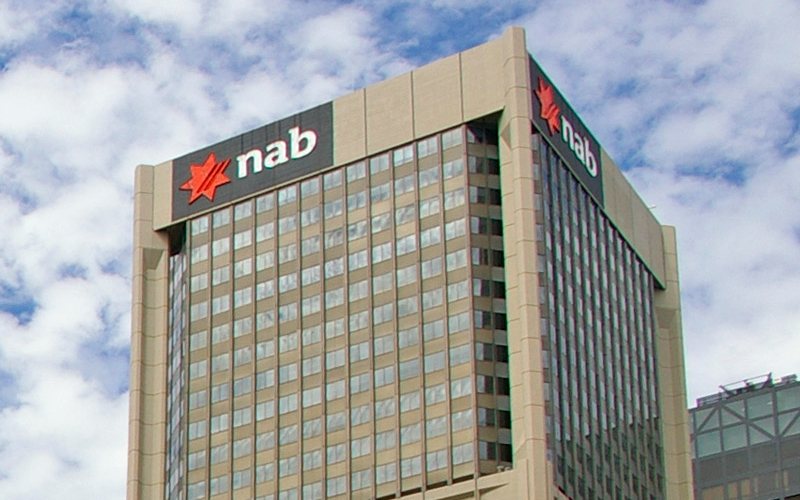In its quarterly results released on Wednesday, NAB reported growing loan arrears in Australia but said improved performance in New Zealand mortgages kept the bank’s 90 day+ delinquency rate stable at 0.75% of loans.
Overall, NAB’s home lending in Australia saw 1% growth with the bank’s outgoing chief executive Ross McEwan noting most NAB customers were coping well in the slowing economy.
The bank’s cash earnings plummeted 16.9% for the quarter although NAB said its net interest margin (NIM), a key measure of bank profitability, rose slightly but did not provide a figure.
Essentially, net interest margin is a measure of what the bank is earning in interest on loans compared to what it is paying in interest on deposits.
NAB has previously been fairly explicit in its aim to protect margins rather than grow the loan book in the current RBA tightening cycle.
Big bank loan arrears figures
NAB is the third big bank to report results this earnings season, following Commonwealth Bank of Australia (CBA) last week and Westpac on Monday.
Westpac revealed its 90+ day mortgage delinquency rate increased by nine basis points for the December quarter to 0.95% of its loan book.
Westpac’s chief executive Peter King said the higher arrears reflected the tougher economic environment.
Meantime, the arrears figure for Australia’s largest home lender, CBA, came in substantially lower at 0.52% in the six months to December.
However, it said its longer-term average home loans arrears rate was 0.65% of loans.
Smaller banks Bendigo and Adelaide Bank also reported a 0.52% arrears rate for the half while AMP Bank said its 90+ day arrears rate was 0.62% for the 2023 full year.
AMP Bank said its arrears figure was lower than the industry average of 0.70%.
What do the figures tell us?
In a period of rising inflation and interest rates, the number of Australians falling behind on their home loans remains relatively low by historical standards.
Analysts attribute this to the strong labour market; official figures released on Wednesday also put Australia’s wages growth at 4.2% over 2023.
Despite this, CBA CEO Matt Comyn said mortgage arrears are ticking higher.
“As cash rate increases have a lagged impact on households and business customers, we expect financial strain to continue in 2024, with an uptick in arrears and impairments,” he said.
Mr Comyn said the majority of interest rate rises have already been passed through to mortgage repayments but estimates about another 20% is yet to be felt by customers.
CBA has $61 billion in sub-3% fixed-rate mortgages set to roll onto variable rates in the next few years.
CBA hardship cases up
In its half-yearly result, the bank reported a 9% increase in hardship cases over the past six months to more than 7,000.
It also estimated around 3.7% of mortgage borrowers who took out a loan within the past five years are now in negative cash flow under the current cash rate of 4.35%.
When this happens, there are a number of options borrowers can take such as digging into savings, converting to an interest-only loan, reducing their expenses, or potentially taking a repayment holiday.
CBA said taking those into account, the proportion of borrowers unable to afford their repayments is at about 1%.
CBA’s home loan book is generally regarded as an accurate bellwether of the Australian lending market, currently accounting for around one in every four mortgages.
So what’s the good news?
The three big banks all noted strong competition in the mortgage and deposit markets had some effect on their latest earnings.
Although NAB reported a marginally higher net interest margin in its quarterly results on Wednesday, CBA and Westpac said their NIMs were down.
Strong competition generally forces banks and lenders to lower the interest rates on their loans and raise them on their deposits to retain and attract customers.
This can be a boon to consumers although banks are generally keen to spruik the “quality” of their loan books, claiming the sector has more stringent lending policies than the non-bank sector.
While arrears among banks have risen only modestly, figures for non-bank lenders are higher.
Investment company Coolabah Capital Investments monitors delinquencies on all securitised home loans.
Its latest data found the 30-day delinquency rate on non-bank home loans is currently at 1.6% compared to the banks’ rate of around 1%.
Image by Thought Catalog on Unsplash

Ready, Set, Buy!
Learn everything you need to know about buying property – from choosing the right property and home loan, to the purchasing process, tips to save money and more!
With bonus Q&A sheet and Crossword!



 Harrison Astbury
Harrison Astbury
 Denise Raward
Denise Raward



